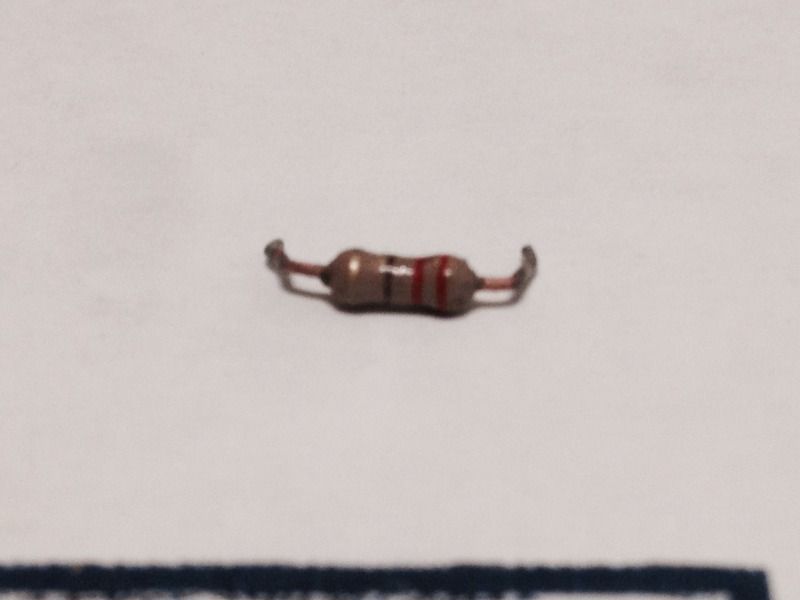OMGCat!
Super Member
There seems to be a decent amount of interest in these amps but just a few threads here or there with descriptions and repair info.
I think Bratwurst7s repair thread is pretty much the most in depth that I've found.
http://www.audiokarma.org/forums/showthread.php?t=635631
If you know of others post time here so they are easier to find.
I'm in the middle of a rebuild of an A-1020 at the moment. I have a bunch of Yamaha stuff but the A-1000 was my first intro to Hi-Fi and my first intro to Yamaha when my father bought one new in '85. My best friends father happened to have an A-1020 and I spent hours listening to that when I was a teenager so both units have sentimental value. I decided to pick up whatever clean one showed up first.
This one appeared clean in the pictures and wasn't missing any buttons so I decided to go for it even though it was advertised as non-working. It almost ended up a crappy CL deal but turned out ok because the seller didn't know how to work the voltage selector switch. After getting rid of the dust, setting the voltage switch and properly configuring the jumpers the poor thing actually worked. It even sounded very nice. Cosmetically it's good+ I'd say.
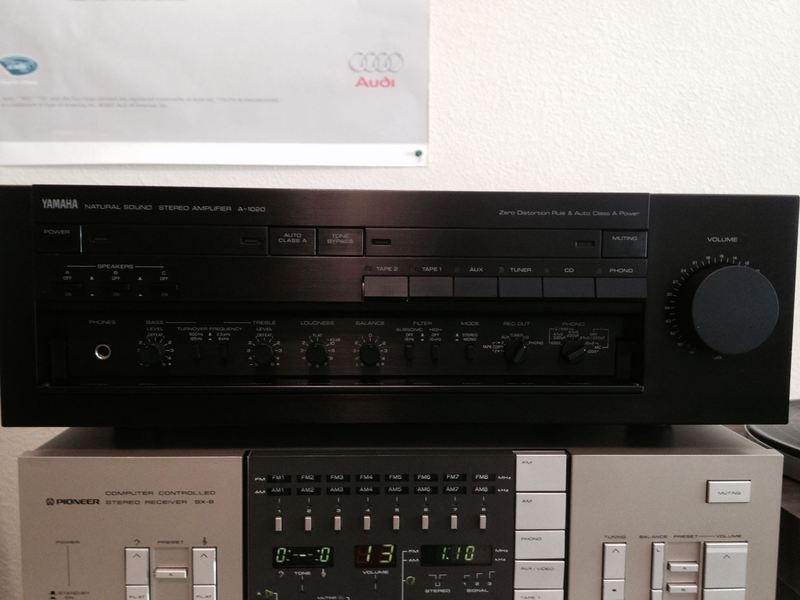
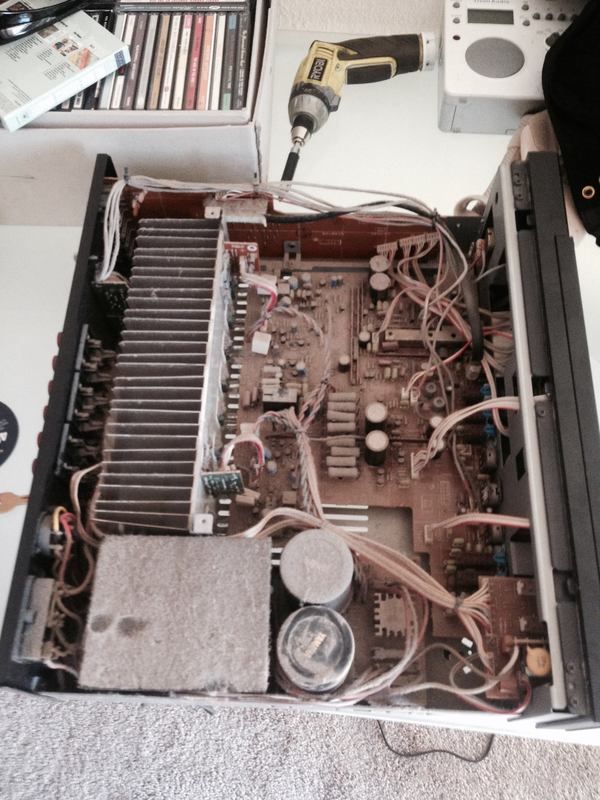
First the glue. There was glue under my caps and it ate stuff. A few resistors, a bunch of jumpers, a diode or two. No biggie unless it eats through something and nukes the whole thing and then it becomes the biggest biggie. This bit of carnage is under the Black Gate caps.
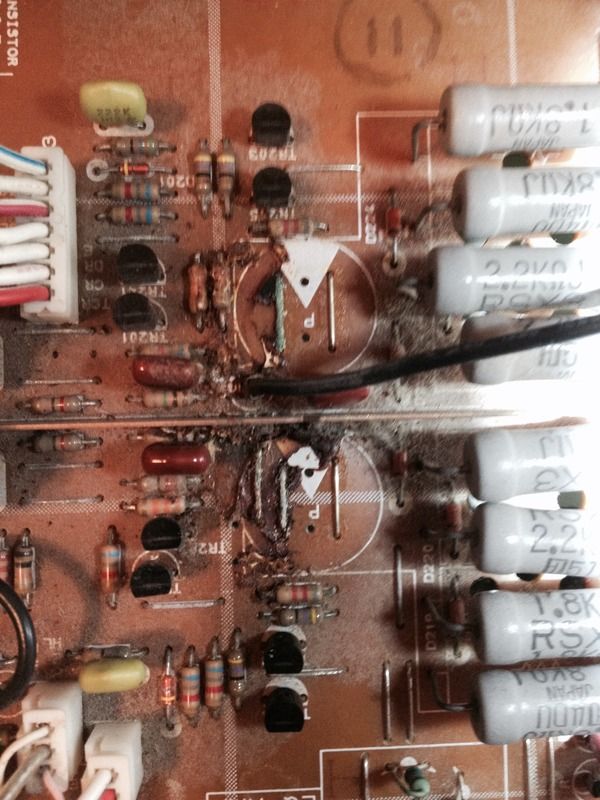
Secondly the solder joints on these amps suck. Half of the speaker post solder joints were broken but still (kind of) making contact. The transistors on the driver board could be wiggled and probably pulled out if you wanted to. A good portion of the joints on the main board have the tell tale rings around them. I'm going to go over every joint. I don't want something making intermittent contact and driving me up a wall.
Third, the caps really do need to be replaced on these. I know some people argue originality or whatever but I've pulled only 4 caps so far and only one was at value. The rest were 10-40% low.
Fourth, replace the heat sink compound. It was totally dried out and more cement like than anything. Replace the micas too unless you feel like trying to clean that stuff off somehow.
Lastly (so far) is the carbon film resistors. I pulled a few for replacement due to being green and fuzzy from the glue and tested them just for science. The 22ohm measured 220ohm and a 2.2kohm measured somewhere around 30kohm. I'm going to measure all of them in circuit but if this is any indication I'll probably have to replace most of them.
I decided to go with the Bournes multiturn pots and found a way around having to add a lead extension and I've posted pics so you can see how. You can also see how nice and clean it's become
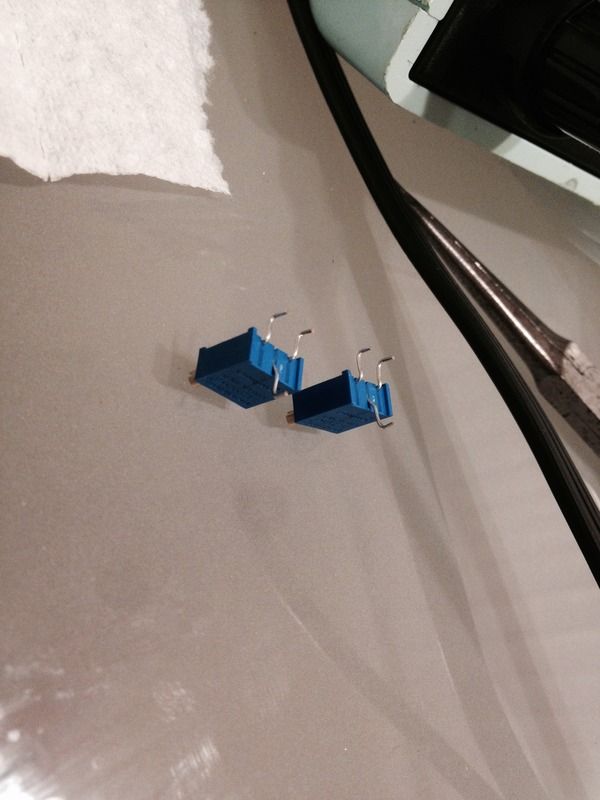

To add a I got a T-1020 coming from the auction site because I'm OCD and couldn't use my T-80 with the wrong amp.
I got a T-1020 coming from the auction site because I'm OCD and couldn't use my T-80 with the wrong amp.
That's it for now. I'll add to this as time permits me to work on it and everyone else feel free to add whatever you like.
I think Bratwurst7s repair thread is pretty much the most in depth that I've found.
http://www.audiokarma.org/forums/showthread.php?t=635631
If you know of others post time here so they are easier to find.
I'm in the middle of a rebuild of an A-1020 at the moment. I have a bunch of Yamaha stuff but the A-1000 was my first intro to Hi-Fi and my first intro to Yamaha when my father bought one new in '85. My best friends father happened to have an A-1020 and I spent hours listening to that when I was a teenager so both units have sentimental value. I decided to pick up whatever clean one showed up first.
This one appeared clean in the pictures and wasn't missing any buttons so I decided to go for it even though it was advertised as non-working. It almost ended up a crappy CL deal but turned out ok because the seller didn't know how to work the voltage selector switch. After getting rid of the dust, setting the voltage switch and properly configuring the jumpers the poor thing actually worked. It even sounded very nice. Cosmetically it's good+ I'd say.


First the glue. There was glue under my caps and it ate stuff. A few resistors, a bunch of jumpers, a diode or two. No biggie unless it eats through something and nukes the whole thing and then it becomes the biggest biggie. This bit of carnage is under the Black Gate caps.

Secondly the solder joints on these amps suck. Half of the speaker post solder joints were broken but still (kind of) making contact. The transistors on the driver board could be wiggled and probably pulled out if you wanted to. A good portion of the joints on the main board have the tell tale rings around them. I'm going to go over every joint. I don't want something making intermittent contact and driving me up a wall.
Third, the caps really do need to be replaced on these. I know some people argue originality or whatever but I've pulled only 4 caps so far and only one was at value. The rest were 10-40% low.
Fourth, replace the heat sink compound. It was totally dried out and more cement like than anything. Replace the micas too unless you feel like trying to clean that stuff off somehow.
Lastly (so far) is the carbon film resistors. I pulled a few for replacement due to being green and fuzzy from the glue and tested them just for science. The 22ohm measured 220ohm and a 2.2kohm measured somewhere around 30kohm. I'm going to measure all of them in circuit but if this is any indication I'll probably have to replace most of them.
I decided to go with the Bournes multiturn pots and found a way around having to add a lead extension and I've posted pics so you can see how. You can also see how nice and clean it's become


To add a
That's it for now. I'll add to this as time permits me to work on it and everyone else feel free to add whatever you like.
Last edited:


